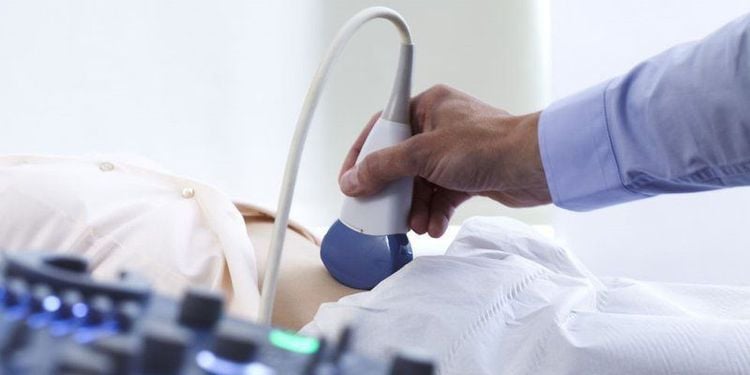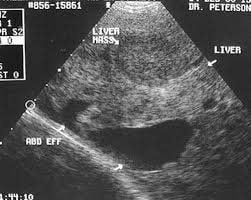The article was professionally consulted by Master, Resident Doctor Nguyen Van Anh - Doctor of Diagnostic Imaging - Department of Diagnostic Imaging and Nuclear Medicine - Vinmec Times City International General Hospital.
Currently, the number of cases of kidney failure is increasing. To detect kidney diseases, ultrasound is a widely used diagnostic method. So can ultrasound detect kidney failure?
1. Overview of concepts of kidney failure, kidney ultrasound
1.1 What is kidney failure?
The 2 kidneys of a normal healthy person have about 1 million kidney units. A person can lose up to 50% of the kidney units but still live normally. However, if more than 50% of the number of kidney units are lost, the remaining units won't be able to compensate, then kidney failure will begin. Kidney failure includes acute kidney failure and chronic kidney failure.
Acute kidney failure: can be detected by measuring urine output in a day. If the patient makes no urine or less than 100ml of urine in 24 hours, it may be a warning sign that the patient has acute kidney failure. In addition, the patient may also have other signs such as facial edema, swollen eyelids, and facial swelling due to fluid retention in the body;
Chronic kidney failure: Symptoms are quite constitutional, the patient usually only has fatigue, loss of appetite, and anemia. Patients may overlook these symptoms and not seek medical help early on. Later, the patient may vomit, have swelling of the limbs, high blood pressure, itching all over the body, blood in the urine, or protein in the urine (when tested), ...

1.2 What is renal ultrasound?
Renal ultrasound is a technique that uses sound waves to create images of the size, structure, or pathological signs of the kidney. This is a valuable technique in diagnosing localized kidney diseases such as kidney stones, kidney cysts, kidney abscesses, hydronephrosis, or kidney failure. Ultrasound is a non-invasive technique that is painless, safe for patients, and highly accurate.
Characteristics of a normal, healthy kidney ultrasound: The kidney is bean-shaped, the renal hilum is located medially, the size of the 2 kidneys is often not the same, about 9 - 12cm long, about 4 - 6cm wide, and about 3 - 4cm thick; the border is even, and the left kidney parenchyma is triangular (because the left kidney is slightly compressed by is pressed by the spleen). When performing ultrasound, the ureter cannot be observed in healthy people. If the ureter is seen, it is usually due to malformation of the ureter or ureter dilation. Ultrasound also clearly shows the renal arteries and veins.
2. Can ultrasound detect nenal failure?
Ultrasound gives rather vague results in diffuse renal diseases such as acute glomerulonephritis, chronic glomerulonephritis, nephrotic syndrome, and nephrotic amyloidosis. However, when the disease progresses to the stage of renal failure, seriously affecting the size of the kidney, ultrasound gives clear results. Because at that time, the kidney size is smaller than normal.
Therefore, it can be seen that in clinical practice, ultrasound can detect renal failure. However, ultrasound is needed many times to have an accurate diagnosis, helping to improve the effectiveness of disease treatment.

3. How does ultrasound assess kidney failure?
Ultrasound is an imaging diagnostic method used in the assessment of acute or chronic kidney failure, sometimes supplemented by Doppler ultrasound. Most cases of kidney failure have no known cause, so ultrasound can help determine part of the causes of kidney failure, thereby providing appropriate treatment directions. Common problems leading to kidney failure that can be identified on ultrasound are:
- Dilated renal pelvis causing obstruction leading to kidney failure: In patients with dilated renal pelvis, it is necessary to confirm the diagnosis or rule out urinary tract obstruction.
- Reduced kidney function in end-stage renal disease: When the two kidneys are less than 6 cm in length, it is considered end-stage kidney disease. At this time, the renal cortex is not strong enough to maintain its inherent function; the patient has severe kidney failure.
- Ultrasound images show that the body is atrophied in size, the renal medulla is hyperechoic, and the medulla and cortical medulla are indistinguishable.
- Polycystic kidney disease: This is a genetic disease that can easily progress to chronic kidney failure, often requiring dialysis
However, in cases where the kidneys are still of normal size and there is no renal pelvis dilation, ultrasound is not enough to confirm the diagnosis but only has the role of providing some suggestions. For patients with normal kidney size and no renal pelvis dilation, to accurately diagnose the possibility of kidney failure, a kidney biopsy is needed. A biopsy is best performed under ultrasound guidance.

So, to the question of whether ultrasound can detect kidney failure, the answer is: Yes. Depending on the case, only ultrasound may be needed or other techniques may be needed to confirm the diagnosis. And patients should absolutely follow the doctor's instructions to detect the disease early and treat it effectively.
To arrange an appointment, please call HOTLINE or make your reservation directly HERE. You may also download the MyVinmec app to schedule appointments faster and manage your reservations more conveniently.














